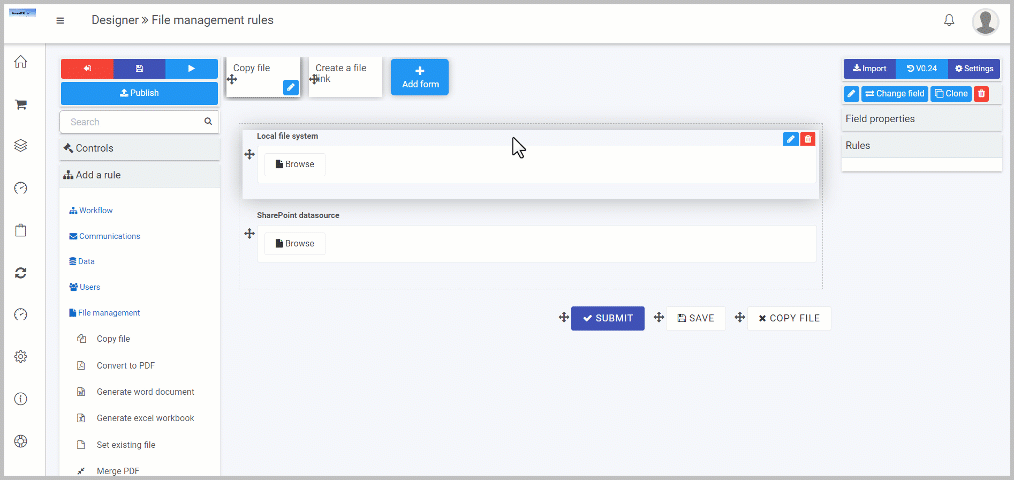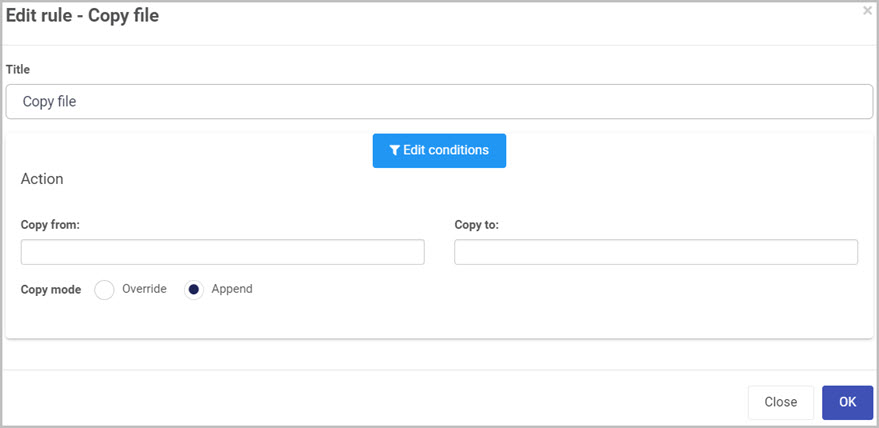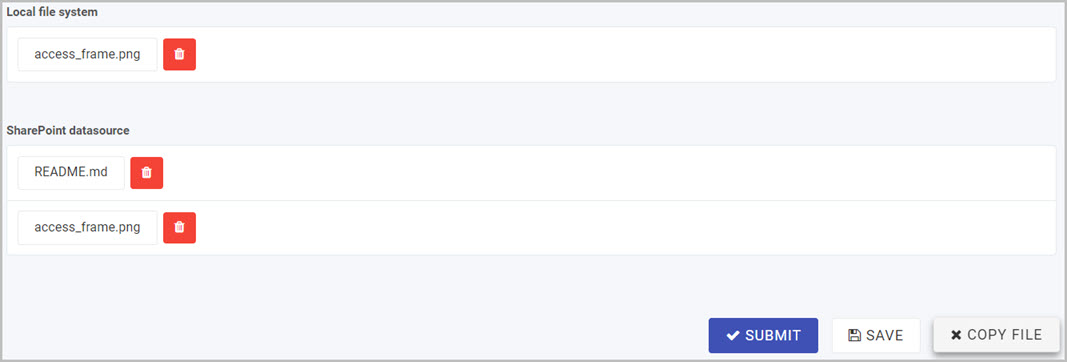Copy file
Introduction
The Copy file rule allows you to copy a file from one field in your form into another field in a different form. You can use this rule to copy files from one datasource into another, by using different file fields for where you are copying to and from. For example if you want to copy a file from your local file system to a SharePoint location, set file fields for these locations, see gif below:

When to use
Use this rule when you need to copy files from one form to another or to transfer files from one datasource into a different one.
You can add this rule:
- to a field
- to a form
- to a process (the rule will run on load)
Before you get started
In advance of using the Copy file rule, in your process you need to have created at least one or more forms. The rule also requires two file fields in order to select the original file and the other is used to store the copied version. To learn how to add a file go to File upload control.
- File field (Original version) - used to hold the file that you want to copy.
- File field (Copied version) - used to store the copied version of the original file.
How to get started
-
Click on an existing process by going to Administration > Designer and decide which form, or field you will apply the rule to, by clicking on that item so that it is in edit mode so you can see the Edit/pen button, Pen button
 .
. -
Click on Add a rule > File management > Copy file.
-
In the Edit rule - Copy file dialog box, give the rule a title in the Title field.

-
If you want to add conditions for the rule, click on the Edit conditions button
 see Conditions for more details.
see Conditions for more details. -
Under the Action section fill out the following:
-
Copy from - select a file field which holds the file that you want to copy.
-
Copy to - select a file field which will store the copied version of the original file.
-
Copy mode - you have two options when copying a file from one field into another:
-
Override - when a file already exists in the Copy to file filed and the copy rule is triggered again, the Copy to file filed will get overridden by the new file from Copy from. See example below:

When the Copy file rule is triggered, the file README.md in the SharePoint datasource field will be overridden by the access_frame.png file in the Local file system field. See below to see the result when Copy file rule is triggered again:

-
Append - when a file already exists in the Copy to file filed and the copy rule is triggered again, the Copy to file filed will be appended resulting in multiple files in the Copy to filed. See example below:

When the Copy file rule is triggered, the file access_frame.png in the Local file system field will be appended to the already existing README.md file in the SharePoint datasource field. See below to see the result when Copy file rule is triggered again:

-
-
-
When you are finished editing the dialog box, click on OK or click on Close at any time to exit the dialog box.
Editing, deleting or duplicating rules
When you have clicked on an existing rule, and the rule is visible in the right-hand pane under Rules, there are a number of options available to you.
- To disable a rule click the slider across beside the rule name.
- To copy a rule, click on the Duplicate button
 beside the rule name.
beside the rule name. - To delete a rule, click on the Bin/Trash button
 .
. - To view a rule, click on the rule name to open the Edit rule dialog box.
User tip 
- You can use this rule to copy files from one datasource into another. In the file field options of the Copy to field, set the destination to a datasource you want to copy a file into. To learn how to change the destination option in a file field go to File upload control.
What’s next 
To find out more about other File management rules go to File management rules.
To find out more about other rules go to Rules.